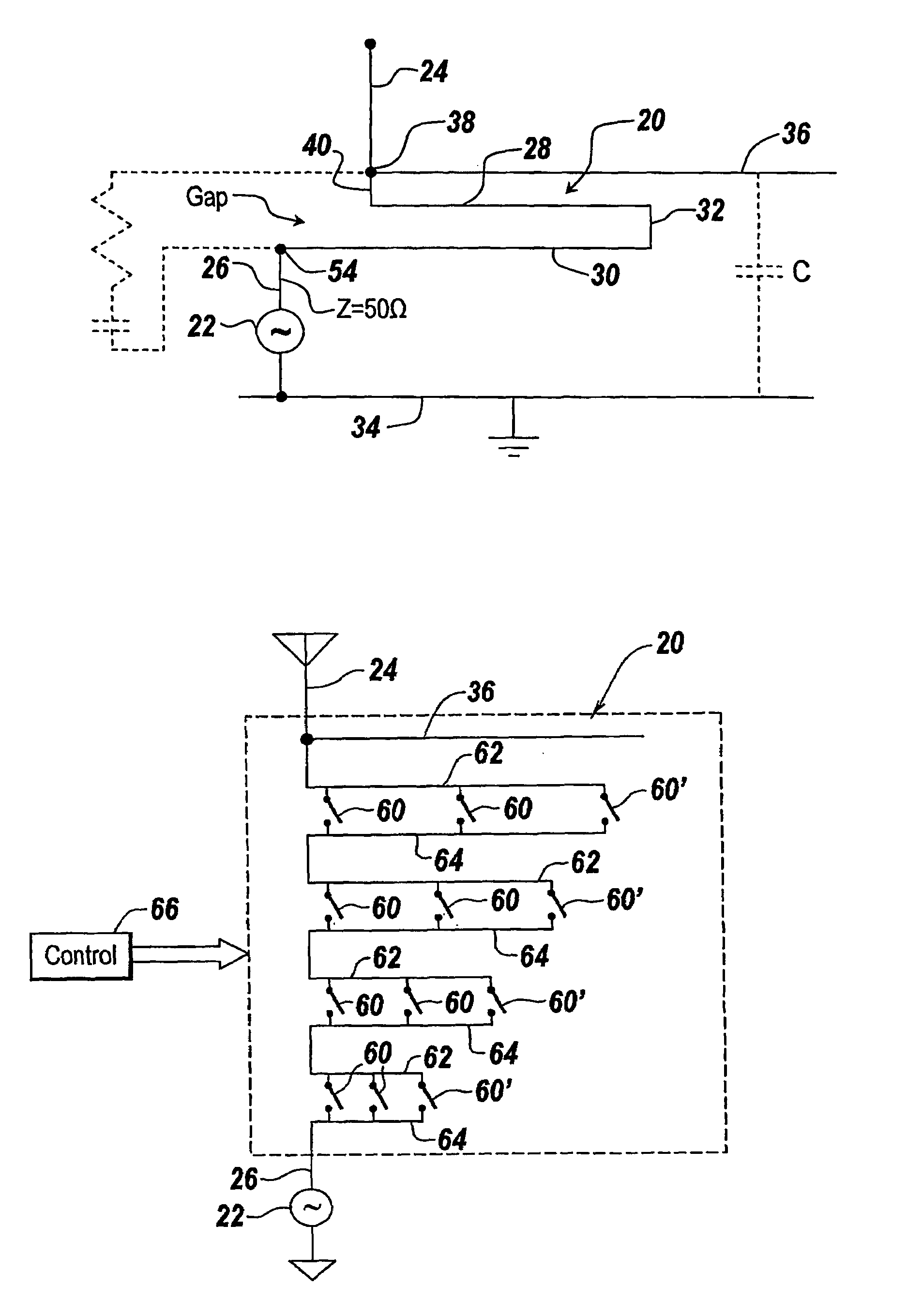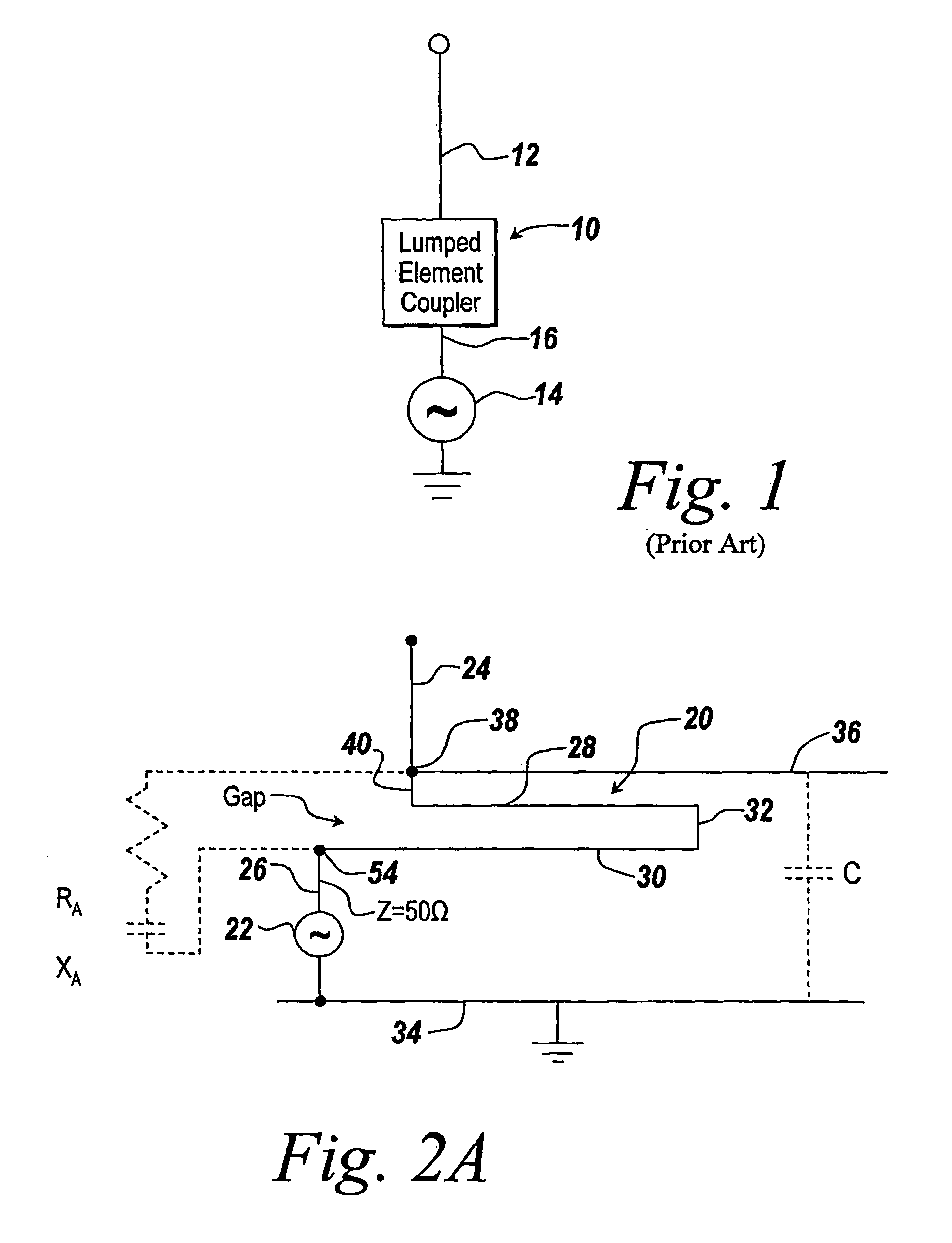Meander line antenna coupler and shielded meander line
a shielded meander line and antenna coupler technology, applied in coupling devices, waveguide type devices, radiating element structural forms, etc., can solve the problems of reducing the radiated power of requiring oversized and expensive switches, and requiring 20 to 30 db of switching speed, so as to reduce the resonant frequency of narrow band antennas, reduce the low frequency cutoff limit, and reduce the delay per unit length
- Summary
- Abstract
- Description
- Claims
- Application Information
AI Technical Summary
Benefits of technology
Problems solved by technology
Method used
Image
Examples
Embodiment Construction
[0077]Referring now to FIG. 1, a conventional lumped element coupler 10 is coupled between a monopole or whip antenna 12 and a signal source 14 coupled between the coupler and ground. As mentioned hereinbefore, whether the lumped element coupler involves pi networks or T networks, each of these networks involves discrete elements in the form of a coiled inductor and a capacitor. Typically, the lumped element couplers act by changing the inductance or capacitance to match the impedance of the antenna to a particular transmission line, here shown at 16. In the case of inductors, the inductors are tapped at various points either mechanically or through switching circuits, whereas the capacitors may be made variable either. by a variable plate or by switching in and out a number of capacitors to provide for the appropriate coupling of the antenna to the transmission line.
[0078]Rather than utilizing a lumped element coupler and referring now to FIG. 2A, what is shown is the use of a mean...
PUM
 Login to View More
Login to View More Abstract
Description
Claims
Application Information
 Login to View More
Login to View More - R&D
- Intellectual Property
- Life Sciences
- Materials
- Tech Scout
- Unparalleled Data Quality
- Higher Quality Content
- 60% Fewer Hallucinations
Browse by: Latest US Patents, China's latest patents, Technical Efficacy Thesaurus, Application Domain, Technology Topic, Popular Technical Reports.
© 2025 PatSnap. All rights reserved.Legal|Privacy policy|Modern Slavery Act Transparency Statement|Sitemap|About US| Contact US: help@patsnap.com



